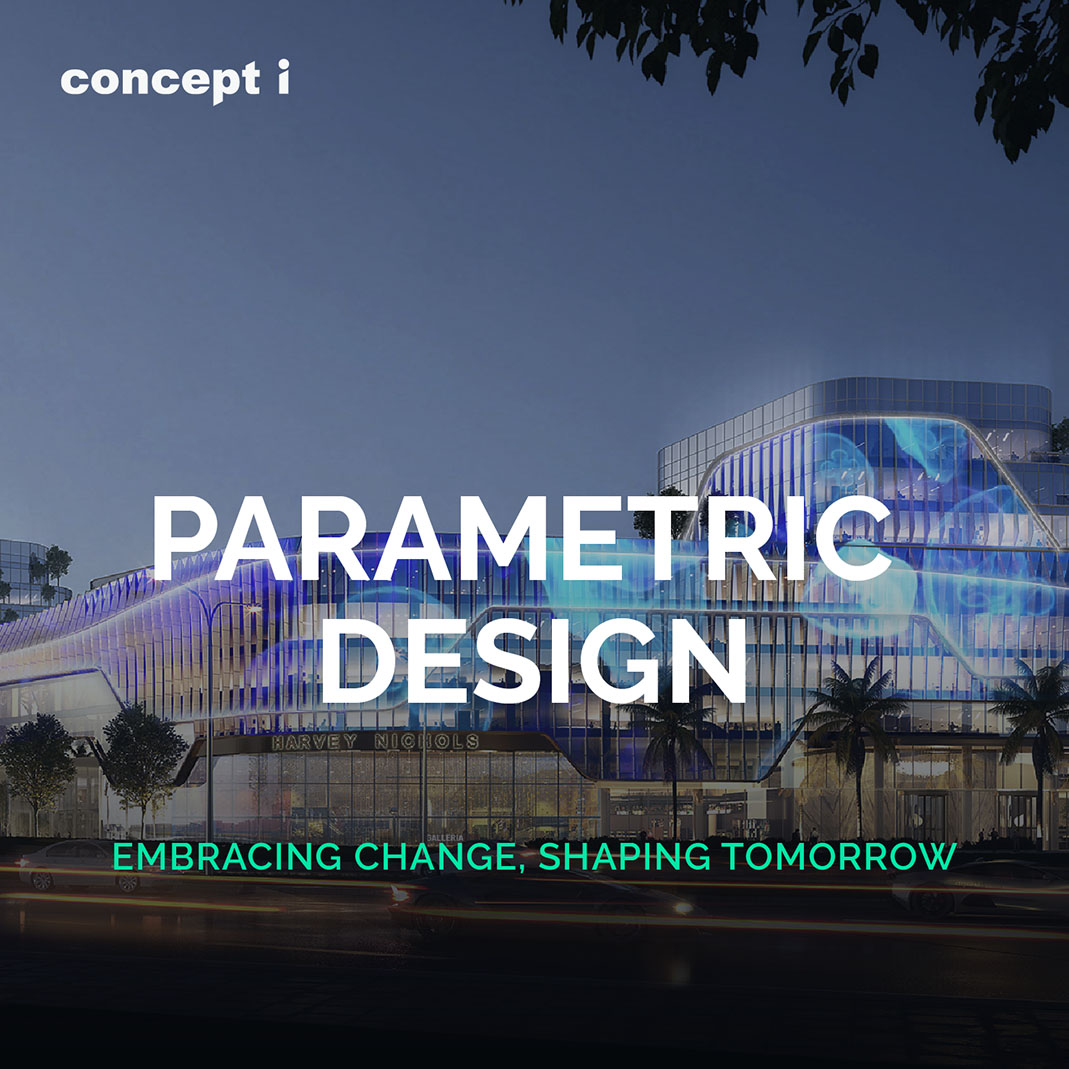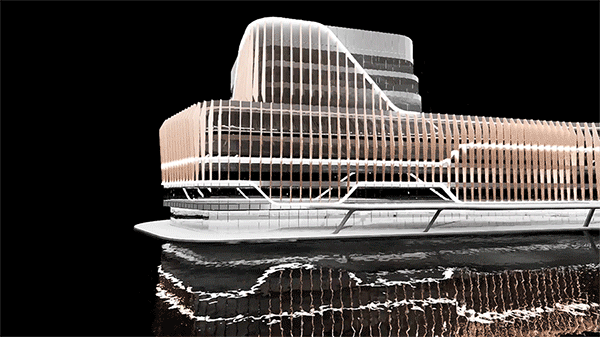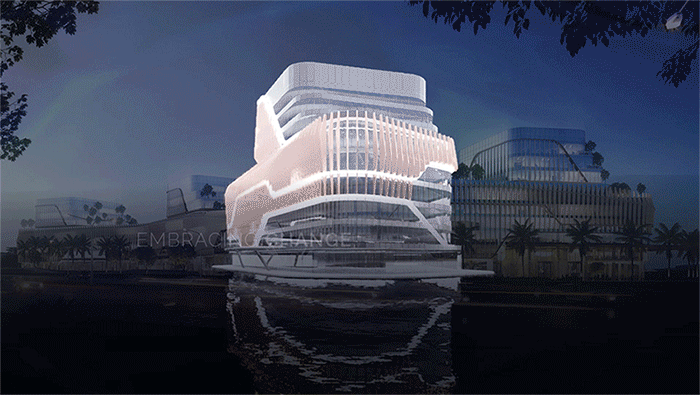
PARAMETRIC SPACE
EMBRACING CHANGE, SHAPING TOMORROW
By Natalie Chelliah, Associate Director (Interior)
Many understand ‘Parametric Design’ to be firstly, if not only, an aesthetic style. The users of parametric tools – and their ability to generate intricate, organic, and mesmerizing forms – have captivated the world of design. Architects like Zaha Hadid come to mind, and iconic projects such as the Heydar Aliyev Center in Baku, Azerbaijan – sweeping and fluid, seen to be breaking the convention of ‘normal’, rectilinear buildings. These structures challenge conventional notions of what is possible, blurring the line between art and architecture.
However, it is not only an aesthetic style. Designing ‘Parametrically’ is an innovative approach that uses algorithms and mathematical parameters to create complex and adaptable design solutions. It enables designers to encode a set of rules and variables into their software (at Concept i, we use Grasshopper), allowing for the generation of infinite design iterations in response to changing parameters.
“Essentially, it is design driven by both Data and Computation.”
The overarching strength of designing parametrically – is the ability to counteract change. Within all design fields, but particularly architecture and interiors, the design process is never straightforward. Multiple factors can affect the design of a space throughout its conceptual journey. Traditional design processes are often linear, making it challenging to respond to evolving needs and circumstances.
These days we have come to expect change – so we should be prepared for it.
When using programs such as Grasshopper, logic can be embedded into the design process that is adaptable – meaning changes and updates are easily accommodated. Whether it’s adjusting the size and shape of a building or facade, optimizing the best spatial configuration, or even fine-tuning elements based on environmental factors – the use of parametric design software can help us swiftly adapt to these new requirements.
One of our recent key projects to use parametric design principles from the beginning, was a long, horizontal office building. We created a sweeping, louvred façade – which wasn’t only beautifully eye-catching, but also responded to the intense sun in the region. We analysed the building faces for sunlight hours and intensity, then generated the louvres whose depth responded to these factors, providing sufficient shading for the workers inside. Client design changes were also faced in the process, however having a robust Grasshopper script meant we could integrate and update almost seamlessly. We also produced multiple design options with ease, for the client to choose from.
As our world becomes increasingly more complex, the demand for flexible and efficient design solutions is first and foremost in our minds. Parametric design can play a pivotal role in meeting these demands. From sustainable architecture that responds to environmental conditions, to façade panel customisation on a mass scale, parametric design helps us save time by working more efficiently, saving money, and reducing design fatigue.
Link: https://mailchi.mp/concepti.com/parametric-space-design





